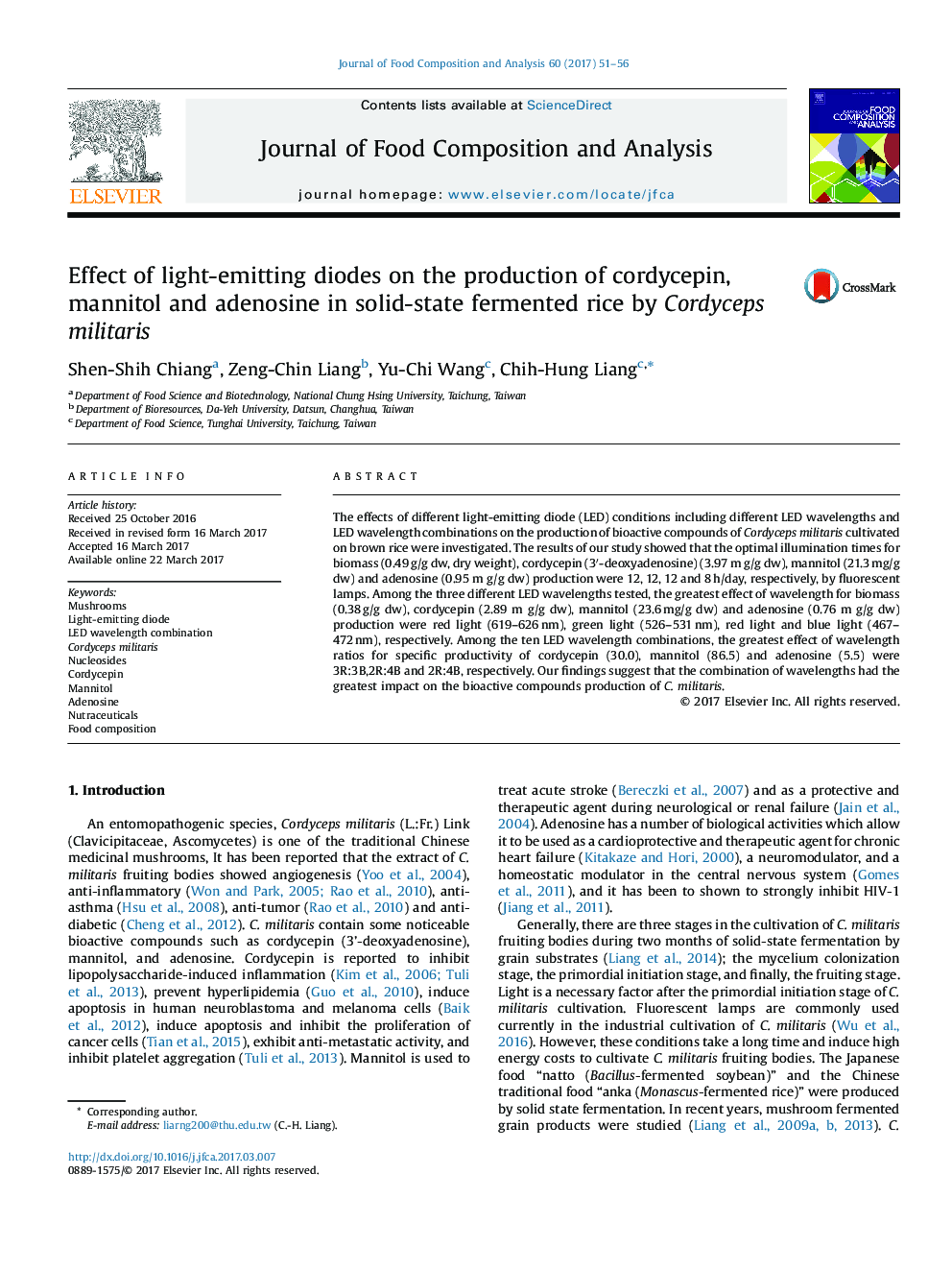| کد مقاله | کد نشریه | سال انتشار | مقاله انگلیسی | نسخه تمام متن |
|---|---|---|---|---|
| 5136897 | 1494482 | 2017 | 6 صفحه PDF | دانلود رایگان |
عنوان انگلیسی مقاله ISI
Effect of light-emitting diodes on the production of cordycepin, mannitol and adenosine in solid-state fermented rice by Cordyceps militaris
دانلود مقاله + سفارش ترجمه
دانلود مقاله ISI انگلیسی
رایگان برای ایرانیان
کلمات کلیدی
موضوعات مرتبط
مهندسی و علوم پایه
شیمی
شیمی آنالیزی یا شیمی تجزیه
پیش نمایش صفحه اول مقاله

چکیده انگلیسی
The effects of different light-emitting diode (LED) conditions including different LED wavelengths and LED wavelength combinations on the production of bioactive compounds of Cordyceps militaris cultivated on brown rice were investigated. The results of our study showed that the optimal illumination times for biomass (0.49Â g/g dw, dry weight), cordycepin (3â²-deoxyadenosine) (3.97 m g/g dw), mannitol (21.3Â mg/g dw) and adenosine (0.95 m g/g dw) production were 12, 12, 12 and 8Â h/day, respectively, by fluorescent lamps. Among the three different LED wavelengths tested, the greatest effect of wavelength for biomass (0.38Â g/g dw), cordycepin (2.89 m g/g dw), mannitol (23.6Â mg/g dw) and adenosine (0.76 m g/g dw) production were red light (619-626Â nm), green light (526-531Â nm), red light and blue light (467-472Â nm), respectively. Among the ten LED wavelength combinations, the greatest effect of wavelength ratios for specific productivity of cordycepin (30.0), mannitol (86.5) and adenosine (5.5) were 3R:3B,2R:4B and 2R:4B, respectively. Our findings suggest that the combination of wavelengths had the greatest impact on the bioactive compounds production of C. militaris.
ناشر
Database: Elsevier - ScienceDirect (ساینس دایرکت)
Journal: Journal of Food Composition and Analysis - Volume 60, July 2017, Pages 51-56
Journal: Journal of Food Composition and Analysis - Volume 60, July 2017, Pages 51-56
نویسندگان
Shen-Shih Chiang, Zeng-Chin Liang, Yu-Chi Wang, Chih-Hung Liang,